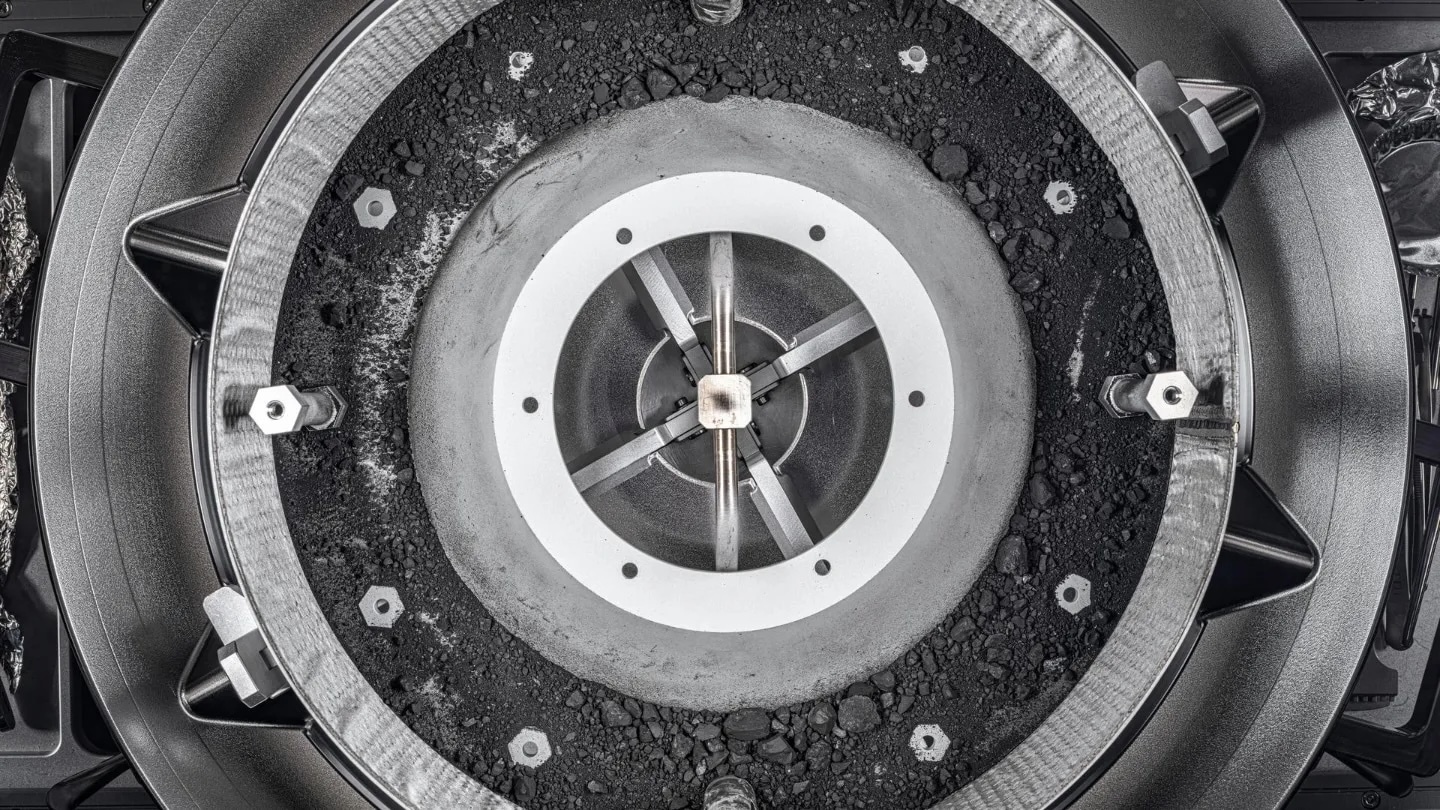17.02.2024
Mission member Harold Connolly shares how the team finally got the capsule open and what’s next

Pieces of the asteroid Bennu fill the sample container (shown) of NASA’s OSIRIS-REx mission. In January, engineers finally removed two stuck screws to access the full sample.
NASA, ERIKA BLUMENFELD AND JOSEPH AEBERSOLD
It’s official: NASA’s OSIRIS-REx spacecraft snagged 121.6 grams of pristine space rocks when it bopped the asteroid Bennu four years ago, more than double the mission’s official science goal, the agency confirmed February 15.
Launched in 2016, OSIRIS-REx is NASA’s first mission to collect samples from an asteroid and return them to Earth so scientists can study our solar system’s origins. After performing its grab-and-go procedure from the diamond-shaped Bennu, the spacecraft dropped its canister into our atmosphere last year (SN: 9/22/23). Engineers swiftly shuttled it off to a specially designed sample curation center at the Johnson Space Center in Houston, where it was placed in a hermetic glove box to prevent contamination by terrestrial material.
While researchers have been able to analyze some rocks and dust already, weighing the full sample has been delayed by a couple stuck screws that prevented anyone from accessing the entire contents of the capsule (SN: 10/11/23). Some clever workarounds finally unlocked the full sample on January 10, and it will now be distributed to scientists around the world for study.
To learn how engineers got the canister open, as well as what kinds of science the sample will teach us, Science News spoke with Harold Connolly, a geologist at Rowan University in Glassboro, N.J., who oversees analysis of the material from Bennu. The conversation has been edited for clarity and brevity.
SN: Shortly after retrieving the OSIRIS-REx canister, you were able to collect some sample, right?
Connolly: There was lots of dust on the outside of the canister. That was the first material we got, approximately 1 to 1.1 grams or so of fine dust particles.
SN: What kinds of problems did you face before you could fully open the main sample container?
Connolly: There’s a bunch of fasteners or screws holding the container closed, approximately 32 of them. And two of them we couldn’t loosen enough with the equipment we had. But there’s a mylar flap that moves, which trapped the sample in a container. The curation team at the Johnson Space Center figured out it could just push down the flap. Without removing the plate that was stuck, the team could get sample out from inside the TAGSAM [Touch-and-Go-Sample-Acquisition-Mechanism] head by literally pushing down the mylar flap and scooping it out very gently. We got 70 grams of sample — a lot.
But to access the rest of the sample, they had to create a new kind of ratchet wrench screwdriver. The previous screwdriver was starting to flex a little bit, so you might be breaking the screwdriver.
